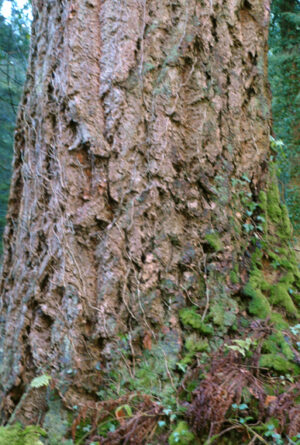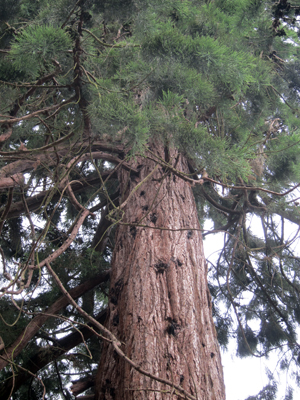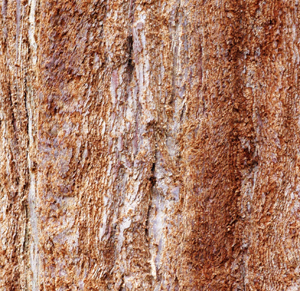Reaching for the sky

The tallest tree in England, a Douglas fir, is found on Exmoor. The Douglas Fir was introduced into cultivation in 1827 by David Douglas. Douglas was a gardener and botanist, who spent his early career in Scotland including time at the Botanical Gardens of Glasgow University. He was recommended to the Royal Horticultural Society by William J Hooker, the first director of Kew Gardens. Douglas made three trips to North America and was ultimately responsible for the introduction of many different species. Some of the plants introduced during Victorian times include Sitka Spruce, Sugar Pine, Western White Pine, Ponderosa Pine, Lodgepole Pine, and Monterey Pine. These have transformed our landscape and the timber industry. Sadly, David Douglas died at an early age on an expedition to Hawaii, in suspicious circumstances.
The Douglas Fir, despite its other common names, Douglas Spruce, Oregon Pine - is not a true fir , spruce, or pine. It is also not a hemlock. Its genus name is Pseudotsuga, means false hemlock. The trees can grow to heights of nearly 100 metres, especially in their native coastal regions and may have a life span of 500 years.
The Exmoor tree, planted 150 years ago, has reached a height of 63 metres (over 200 feet). However, as a relative youngster it still has some way to go — and it has competition.
 A recent survey* revealed there are a half million redwood trees in the UK. Three species exist:
A recent survey* revealed there are a half million redwood trees in the UK. Three species exist:
- the coastal redwood (Sequoia sempervirens ),
- the giant sequoia / redwood (Sequoiadendron giganteum), and
- the dawn redwood (Metasequoia glyptostroboides)
They are among the largest trees on earth. The coastal redwoods are the tallest of the three species. The largest was measured to have a height of some 379 feet (115.5M).
Not only are these trees large but they are also impressive because of their longevity, living for a thousand years is not unusual. Dendrochronology has aged one specimen at over 2500 years. The coastal and the giant redwoods are found naturally on the pacific coast of California and Oregon. Many of the UK redwoods, like the Douglas Fir, were introduced in Victorian times. They were often planted on the estates of the wealthy and landed gentry. There are now probably more redwoods in the UK than in their native Pacific Coast range. Recent hot and dry weather has stressed the American trees, exposing them to intense wildfires.
 A recent study of some 5000 redwoods investigated how well the trees were ‘performing’ when compared to their American counterparts. The tree were scanned with lasers [a non invasive technique] to determine their height and volume (= biomass), They were found to be growing just as well as those in the Sierra Nevada, this is probably due to our relatively mild but wet climate.
A recent study of some 5000 redwoods investigated how well the trees were ‘performing’ when compared to their American counterparts. The tree were scanned with lasers [a non invasive technique] to determine their height and volume (= biomass), They were found to be growing just as well as those in the Sierra Nevada, this is probably due to our relatively mild but wet climate.
The tallest redwood tree in the UK stands at 58 metres at Longleat, so somewhat behind the Douglas fir. However, whilst the Douglas Fir may have a life span of 500 years, a redwood can survive for 2000+ years, giving it time to catch up and overtake.
* see https://www.bbc.co.uk/news/science-environment-68518623
and https://royalsocietypublishing.org/doi/10.1098/rsos.230603
Comments are closed for this post.
